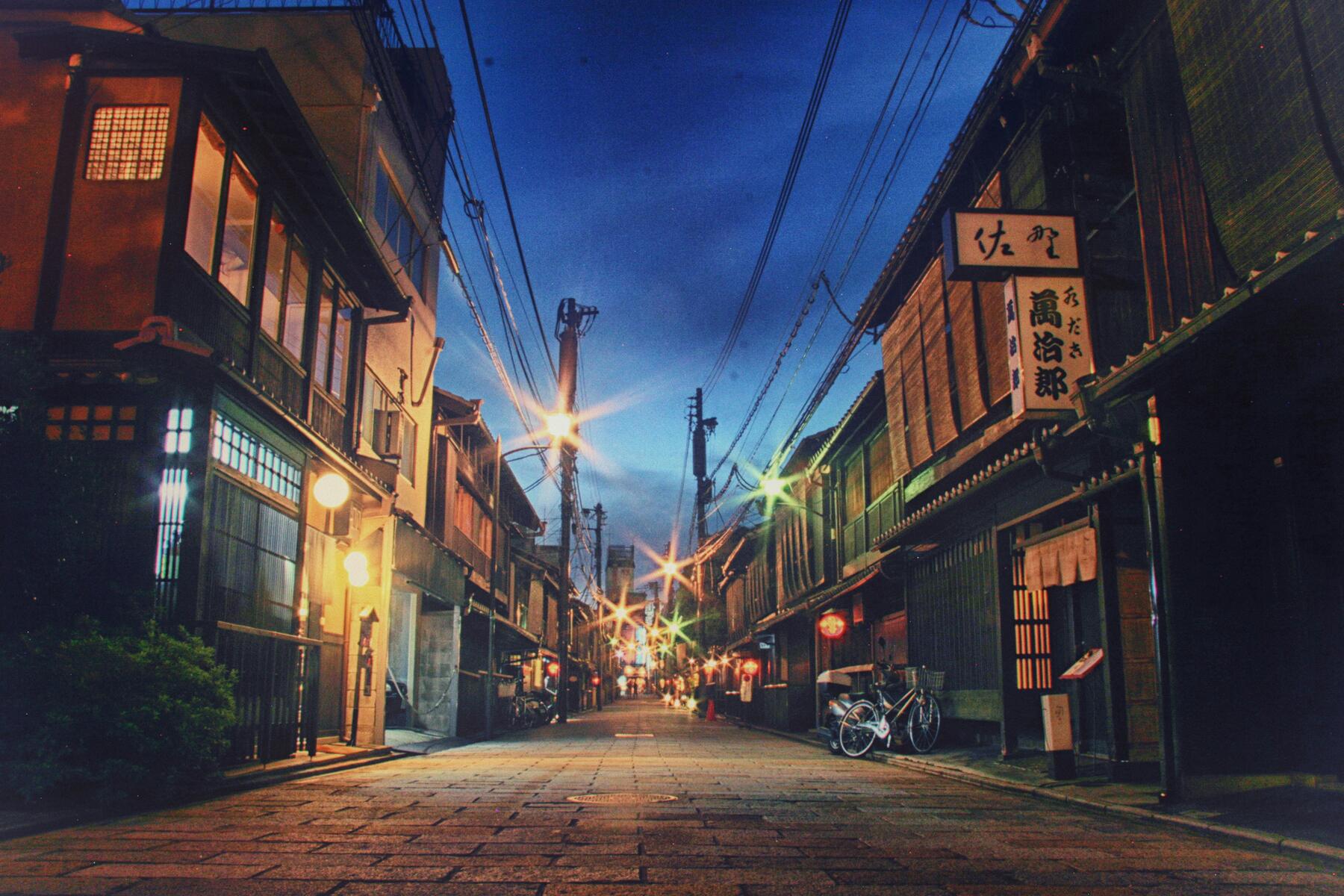Harassment of geishas is rampant.
A main tourist attraction in Kyoto is going to be out of bounds for travelers from next month due to badly behaved tourists. The historic geisha district, Gion, teems with tourists who come to spot geishas on the streets. For many years, residents and businessowners have complained about overtourism and harassment of the performing artists. From April, travelers will not be allowed into some blocks of the district, but the public streets–such as the Hanamikoji Street–will still be accessible.
The pretty alleyways of Gion are lined with teashops, restaurants, and merchant homes, and this is where smartphone-carrying vacationers turn into paparazzi when they see geishas in kimonos and full makeup. There are often complaints of trespassers on private property despite signs telling them to keep out. Signs also urge people to maintain distance from geishas and not snap photographs, and these instructions are also ignored.
District official Isokazu Ota told the Associated Press, “We are going to put up signs in April that tell tourists to stay out of our private streets.” The signs will be both in English and Japanese and those who don’t comply will be fined 10,000 yen ($68).
Related: I Got to Experience Parts of Kyoto That Average Tourists Never See. Here’s How You Can Too
Recommended Fodor’s Video
The Problem With Tourists in Gion
The Gion district has a high concentration of geishas (also known as geiko) and maikos (geishas in training), who host guests at ochaya (teashops), play games, and perform traditional dances. This experience, however, is exclusive and expensive–typically several hundred dollars per person. You have to be referred by an existing client and geishas don’t speak English, so it has traditionally been restricted to Japanese people.
Due to the economic downturn, more travel agencies and hotels have opened the experience to tourists who can afford the exuberant amount. Most tourists, however, visit the Gion area to spot geishas in the streets, either running errands or preparing for the evening ceremonies. For years, these artists have been harassed by tourists who try to photograph or interact with them without consent.
In 2019, authorities in Kyoto banned photography in the geisha district after instances of tourists chasing geishas, touching their kimonos without consent, and disrespecting the historic sites. Overtourism in the city has become a problem, and locals said they were worried about litter, trespassing, and harassment. Back in December, the council of Gion residents complained to the city government about tourist behavior. The gripe was that “Kyoto is not a theme park.”
Tourism in Japan has bounced back after a tough COVID-19 policy that kept travelers out for years. In 2023, 22 million people came to the Asian country and it’s expected that the numbers this year will surpass the 31 million international visitors recorded in 2019. And it’s not just Kyoto dealing with an explosion of tourists.
This week, Mount Fuji authorities also announced extra measures to ensure the safety of travelers and keep nuisance to a minimum. The town is addressing challenges of hosting swathes of people by charging $13 to climb the mountain and restricting the most accessible route to 4,000 people a day. Fuji, an easy drive from Tokyo, is another popular tourist attraction, but in recent years, it has also faced the negative effects of overtourism. It was featured on this year’s No List.
For those who want to get an introduction into the art of being a geisha, Japan has various museums and experiences open to tourists. At Gion Corner in Kyoto, you can watch a geisha performance in a theater. In Kanazawa, there is Ochaya Shima Geisha House in the Higashi Chaya-gai district. This 19th-century former geisha house is now a museum and gives guests an insight into the culture. There are also hotels and travel companies that may get you into a teahouse for a private experience.
Wherever you go, respect the geisha culture and treat them as artists who shouldn’t be approached without consent.



